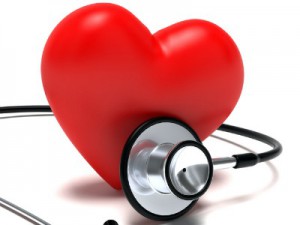A slower heart rate during exercise and at rest is generally considered as an indication of you having a higher level of fitness. But do you know why this is?
Heart rate (HR) is measured (and reported) as the number of times the heart beats per minute (BPM). A slower HR during rest and whilst exercising is indicative of the heart being stronger and more efficient as a pump. For example, a person with a HR of 50bpm will in 1 beat pump the equivalent of 2 beats for a person with a HR of 100bpm.
Physiology of a low Heart Rate
The two main phases of the cardiac cycle are systole and diastole. Systole refers to the phase of the cardiac cycle where the heart beats and pumps blood out into the body. Diastole occurs after each systolic beat and refers to the phase of the heartbeat where the heart relaxes and passively fills with blood. On a side note, the pressure in our arteries when the heart beats is our systolic blood pressure which represents the top number of a blood pressure reading; while the bottom number is our diastolic blood pressure, measured by the pressure in the arteries when the heart relaxes.

The heart contains blood vessels referred to as coronary arteries, which supply the heart muscle with oxygenated blood. The major coronary arteries originate externally to the heart and divide into smaller branches which go deep into the heart muscle. Surprisingly, when the heart beats (systole), these smaller branches get ‘choked off’ and coronary flow is reduced. Alternatively, coronary flow is maximised during diastole as blood returns to the heart and the aorta expands, which perfuses these coronary branches (a healthier individual will have a more elastic aorta allowing greater expansion and filling when blood returns to the heart -> therefore more coronary perfusion).
Typically the heart spends about 270 ms of each cycle in systole and approximately 430ms in diastole. Based on the above information, spending even longer in diastole to allow greater perfusion (passage of blood) into these coronary vessels would be even more beneficial.
So how does this link to a lower HR?
The reason for this is when we have a lower heart rate, the heart actually spends more time in diastole, which reaps the advantages from all the above benefits! Therefore regular physical activity can help you strengthen your heart, reduce your resting heart rate and reduce the risk of cardiovascular disease, as well as numerous other health benefits.
At Inspire Fitness for Wellbeing we work with an array of individuals to help improve their health and maximise the benefits that arise from it. We do this through the design of individually-tailored exercise programs to best meet your goals and needs.
Therefore if you want to begin an exercise program to improve your health and fitness contact us on 9857 3007. Speak to one of our Accredited Exercise Physiologists or tertiary qualified Personal Trainers to make a positive lifestyle change today.
